Papers by Fiorenza Micheli
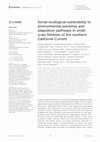
Frontiers in marine science, Feb 8, 2024
Coastal ecosystems and human communities are threatened worldwide by climate change, and shocks f... more Coastal ecosystems and human communities are threatened worldwide by climate change, and shocks from social, market and political change. There is an urgent global need to promote resilient food production and livelihoods in the face of these shocks. Small-scale fisheries (SSF) in rural settings can be particularly vulnerable as they frequently lack the resources, rights and infrastructure to respond to shocks originating outside the focal systems. We examined ecological and social outcomes of environmental extremes in a SSF socioecological system (SES) by using long-term oceanographic (between 2010-2019) and ecological (2006-2018) data tracking change in a kelp forest ecosystem of Baja California, Mexico, and concurrent documentation of proactive and reactive actions of a fishing community organized in a cooperative. Results indicate a complex landscape of 'winners' and 'losers' among species and fisheries exposed to unprecedented environmental extremes, including marine heat waves and prolonged hypoxia, and a suite of Frontiers in Marine Science frontiersin.org 01
Scientific Reports, May 17, 2012
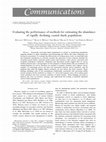
Ecological Applications, Mar 1, 2012
Accurately surveying shark populations is critical to monitoring precipitous ongoing declines in ... more Accurately surveying shark populations is critical to monitoring precipitous ongoing declines in shark abundance and interpreting the effects that these reductions are having on ecosystems. To evaluate the effectiveness of existing survey tools, we used field trials and computer simulations to critically examine the operation of four common methods for counting coastal sharks: stationary point counts, belt transects, video surveys, and mark and recapture abundance estimators. Empirical and theoretical results suggest that (1) survey method selection has a strong impact on the estimates of shark density that are produced, (2) standardizations by survey duration are needed to properly interpret and compare survey outputs, (3) increasing survey size does not necessarily increase survey precision, and (4) methods that yield the highest density estimates are not always the most accurate. These findings challenge some of the assumptions traditionally associated with surveying mobile marine animals. Of the methods we trialed, 8 3 50 m belt transects and a 20 m radius point count produced the most accurate estimates of shark density. These findings can help to improve the ways we monitor, manage, and understand the ecology of globally imperiled coastal shark populations.
Routledge Handbook of Ocean Resources and Management, 2015
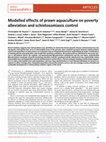
Nature Sustainability, 2019
chistosomiasis is a debilitating disease of poverty, affecting around 200 million people worldwid... more chistosomiasis is a debilitating disease of poverty, affecting around 200 million people worldwide 1,2. It is caused by trematode parasites of the genus Schistosoma that undergo a life cycle involving passage between definitive human hosts and freshwater snails that act as intermediate hosts. While safe and effective treatments, such as the anthelmintic drug praziquantel, are available to reduce the parasite burden (W parasite) and associated symptoms from infected individuals, rapid reinfection in highly endemic areas leads to persistent hot spots of infection 3,4. Successful long-term elimination efforts may require strategies that go beyond conventional mass drug administration (MDA) campaigns to explicitly target the environmental reservoir of the disease 5. There is a rich history of environmental interventions for schistosomiasis that target the intermediate snail hosts 6. Molluscicides are effective in reducing snail populations and have been used in integrated campaigns to control schistosomiasis in areas of South America, Northern Africa and Southeast Asia 6-8. However, these approaches generally require repeated applications of chemicals that may negatively affect non-target species in addition to Schistosomabearing snails 9,10. Another option for reducing transmission is cultivating snail predators, such as river prawns, via aquaculture. Such snail predators have been shown to reduce schistosomiasis transmission associated with Schistosoma haematobium infection by consuming Bulinus snails in the aquatic environment where people contact infested water 11,12. In addition to being voracious predators of snails 13,14 , river prawns are a valuable food commodity 15,16. The giant freshwater prawn Macrobrachium rosenbergii has been domesticated and widely used in commercial hatchery-based aquaculture 17 , providing a key source of protein and encouraging local economic development 18. Furthermore, advances in the production of non-breeding M. rosenbergii monosex populations reduces the risk of prawn invasion in areas where this species is not native, suggesting safe use of this biological control agent globally 19,20. In sub-Saharan Africa, where at least 90% of schistosomiasis cases occur 1,21 , the native African river prawn Macrobrachium
Frontiers in Marine Science, 2018
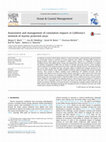
Ocean & Coastal Management, 2017
In response to concerns about human impacts to coastal ecosystems, conservationists and practitio... more In response to concerns about human impacts to coastal ecosystems, conservationists and practitioners are increasingly turning to networks of marine protected areas (MPAs). Although MPAs manage for fishing pressure, many species and habitats in MPAs remain exposed to a multitude of stressors, including stressors from global climate change and regional land-and ocean-based activities. To support the adaptive management of MPAs that are subject to multiple interacting stressors, coastal managers need to understand the potential impacts from other single and multiple stressors. To demonstrate how this can be done, we quantify and map cumulative impacts resulting from multiple stressors to California's network of MPAs, using a widely available cumulative impacts mapping tool. Among individual stressors, those related to climate, including ocean acidification, UV radiation increases, and SST anomalies, were found to have the most intense impacts, especially on surface waters and in the rocky intertidal. Climate stressors are challenging to limit at the local MPA scale, but intense land-and oceanbased impacts that were found to affect a majority of MPAs, such as sediment increases, invasive species, organic pollutants and pollution from shipping and ports, may be more easily regulated at a regional or local scale. This is especially relevant for South and Central coast MPAs where these impacts are the greatest on beaches, tidal flats, and coastal marshes. Accounting for cumulative impacts from these and other stressors when developing monitoring and management plans in California and across the world, would help to improve the efficacy of MPAs.

Research Ideas and Outcomes, 2017
Cumulative human impacts have led to the degradation of marine ecosystems and the decline of biod... more Cumulative human impacts have led to the degradation of marine ecosystems and the decline of biodiversity in the European and contiguous seas. Effective conservation measures are urgently needed to reverse these trends. Conservation must entail societal choices, underpinned by human values and worldviews that differ between the countries bordering these seas. Social, economic and political heterogeneity adds to the challenge of balancing conservation with sustainable use of the seas. Comprehensive macro-regional coordination is needed to ensure effective conservation of marine ecosystems and biodiversity of this region. Under the European Union Horizon 2020 framework programme, the MarCons COST action aims to promote collaborative research to support marine management, conservation planning and policy development. This will be achieved by developing novel methods and tools to close knowledge gaps and advance marine conservation science. This action will provide support for the development of macroregional and national policies through six key actions: to develop tools to analyse cumulative human impacts; to identify critical scientific and technical gaps in conservation efforts; to improve the resilience of the marine environment to global change and biological invasions; to develop frameworks for integrated conservation planning across terrestrial, freshwater, and marine environments; to coordinate marine conservation policy across national boundaries; and to identify effective governance approaches for marine protected area management. Achieving the objectives of these actions will facilitate the integration of marine conservation policy into macro-regional maritime spatial planning agendas for the European and contiguous seas, thereby offsetting the loss of biodiversity and ecosystem services in this region.
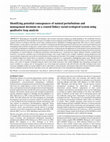
Ecology and Society, 2017
Managing for sustainable development and resource extraction requires an understanding of the fee... more Managing for sustainable development and resource extraction requires an understanding of the feedbacks between ecosystems and humans. These feedbacks are part of complex social-ecological systems (SES), in which resources, actors, and governance systems interact to produce outcomes across these component parts. Qualitative modeling approaches offer ways to assess complex SES dynamics. Loop analysis in particular is useful for examining and identifying potential outcomes from external perturbations and management interventions in data poor systems when very little is known about functional relationships and parameter values. Using a case study of multispecies, multifleet coastal small-scale fisheries, we demonstrate the application of loop analysis to provide predictions regarding SES responses to perturbations and management actions. Specifically, we examine the potential ecological and socioeconomic consequences to coastal fisheries of different governance interventions (e.g., territorial user rights, fisheries closures, market-based incentives, ecotourism subsidies) and environmental changes. Our results indicate that complex feedbacks among biophysical and socioeconomic components can result in counterintuitive and unexpected outcomes. For example, creating new jobs through ecotourism or subsidies might have mixed effects on members of fishing cooperatives vs. nonmembers, highlighting equity issues. Market-based interventions, such as ecolabels, are expected to have overall positive economic effects, assuming a direct effect of ecolabels on marketprices, and a lack of negative biological impacts under most model structures. Our results highlight that integrating ecological and social variables in a unique unit of management can reveal important potential trade-offs between desirable ecological and social outcomes, highlight which user groups might be more vulnerable to external shocks, and identify which interventions should be further tested to identify potential win-win outcomes across the triple-bottom line of the sustainable development paradigm.
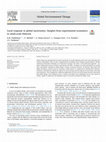
Global Environmental Change, 2018
Global change has systematically increased uncertainty for people balancing short-term needs with... more Global change has systematically increased uncertainty for people balancing short-term needs with long-term resource sustainability. Here, we aim to understand how uncertainty drives changes in human behavior and the underlying mechanisms mediating use of behavioral strategies. We utilize a novel behavioral approachdynamic common-pool resource economic experiments in the fieldand apply it to small-scale fisheries as a system that is particularly vulnerable to global change. Contrary to previous research, we find that when faced with higher uncertainty, resource users are choosing to reduce harvest to compensate for potential future declines. Correlates of this behavior include the capacity for social learning, previous exposure to uncertainty, and strong local institutions. These findings have important implications for any local system facing increased uncertainty from global change. Given adequate access to resources and rights, local communities can be active agents of change, capable of addressing and mitigating impacts of processes generated by higher scales.
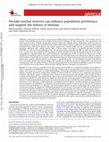
Canadian Journal of Fisheries and Aquatic Sciences, 2015
A critical aspect in the design of a marine reserve (MR) network is its spatial configuration (i.... more A critical aspect in the design of a marine reserve (MR) network is its spatial configuration (i.e., the number, size, and spacing of the individual reserves), particularly how these features influence the effect on fisheries. Here, we derived a size-based, spatially explicit, stochastic demographic model to explore how different spatial configurations of MR networks can affect abundance and commercial yield of the green abalone (Haliotis fulgens), taking as a reference case the abalone fishery of Isla Natividad in Baja California Sur (Mexico). Our analysis suggests that a network of MRs can have a positive effect on abalone population abundance and a slightly negative effect on fishery output with respect to traditional maximum sustainable yield (MSY; i.e., with no reserves). Simulations show that maximum catches achievable with MRs are, under the best configuration, ∼2%–14% lower than traditional MSY depending on the total fraction of the fishing grounds protected. In the case of ...
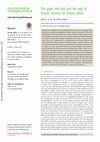
Philosophical transactions of the Royal Society of London. Series B, Biological sciences, Jan 5, 2015
Marine reserves (MRs) are used worldwide as a means of conserving biodiversity and protecting dep... more Marine reserves (MRs) are used worldwide as a means of conserving biodiversity and protecting depleted populations. Despite major investments in MRs, their environmental and social benefits have proven difficult to demonstrate and are still debated. Clear expectations of the possible outcomes of MR establishment are needed to guide and strengthen empirical assessments. Previous models show that reserve establishment in overcapitalized, quota-based fisheries can reduce both catch and population abundance, thereby negating fisheries and even conservation benefits. By using a stage-structured, spatially explicit stochastic model, we show that catches under quota-based fisheries that include a network of MRs can exceed maximum sustainable yield (MSY) under conventional quota management if reserves provide protection to old, large spawners that disproportionally contribute to recruitment outside the reserves. Modelling results predict that the net fishery benefit of MRs is lost when gain...
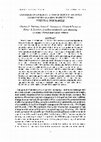
Several essential fish habitats lack the protections necessary to prevent degradation because of ... more Several essential fish habitats lack the protections necessary to prevent degradation because of failure to integrate the scientific disciplines required to understand the causes of the degradation and failure to integrate the fragmented state and federal management authorities that each hold only a piece of the solution. Improved protection of essential habitat for demersal fishes requires much better synthesis of benthic ecology, fisheries oceanography, and traditional fisheries biology. Three examples of degraded habitat for demersal fishes and shellfishes are high-energy intertidal beaches, subtidal oyster reefs, and estuarine soft bottoms. In each case, both scientific understanding of and management response to the problem require a holistic approach. Intertidal beach habitat for surf fishes could be protected by constraints on the character of sediments used in beach nourishment and restriction of nourishment activity to biologically inactive seasons. Subtidal oyster-reef hab...
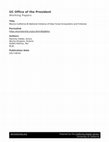
The coastal forests formed by the giant kelp Macrocystis pyrifera are iconic and primary habitats... more The coastal forests formed by the giant kelp Macrocystis pyrifera are iconic and primary habitats distributed discontinuously from central Baja California (Mexico) to central California (USA). The giant kelp creates a biogenic habitat that supports high levels of species diversity and productivity in the region, acting as a refuge, nursery and food provider for many species. Kelp forests provides ecosystem services to humans worth billions of dollars globally. These services include food and natural products, chemical products, recreational and commercial fisheries, ecotourism opportunities, cultural value, and nutrient cycling. Coastal human populations rely on many of these ecosystem services. Beyond its economic benefits, giant kelp, together with the species that inhabit the kelp forests, play a significant role in climate control by regulating carbon flows, acting as a reserve and sink for carbon dioxide on living tissue, and facilitating the burial of carbon in sea bed sediments. Giant kelp and the biological communities that it supports will likely react to climatic and non-climatic changes in complex and unexpected ways. In California and Baja California, giant kelp forests can be expected to contract in their southern extent due to warming waters, reductions in nutrient availability, increasing wave disturbance and grazing by warm-water herbivores. In ecosystems shared between nations, such as kelp forest, the actions taken by one nation invariably affect the other. Effective management of such systems therefore requires strong cooperation.
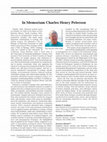
Marine Ecology Progress Series, 2021
Charles 'Pete' Peterson passed away on October 24, 2020 at his home in Pine Knowles Shores, North... more Charles 'Pete' Peterson passed away on October 24, 2020 at his home in Pine Knowles Shores, North Carolina, USA. Pete was an exceptionally creative and productive scientist, who made many important con tributions to ecology and marine science. He obtained a BA in Biology at Princeton University in 1968 before re ceiving an MS in Zoology (1970) and a PhD in Biology (1972) working with Joe Connell at the University of California, Santa Barbara. After a brief stint at the University of Maryland (Baltimore County), Pete moved to The University of North Carolina at Chapel Hill, where he taught, ad vised, and conducted research until he retired in 2019. Over the past half century, Pete fundamentally transformed our understanding of marine ecosystems while also ap plying his research to solving environmental problems. He published over 200 peer-reviewed papers, and his research contributed conceptually to ecology, marine biology, environmental sciences, fisheries eco logy, restoration ecology, and conservation biology. He significantly in fluenced marine ecological science as a longtime Contributing Editor and later Co-Editor-in-Chief for Marine Ecology Progress Series, and Editor-in-Chief of Oecologia.
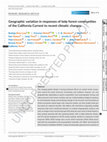
Global Change Biology, 2020
The changing global climate is having profound effects on coastal marine ecosystems around the wo... more The changing global climate is having profound effects on coastal marine ecosystems around the world. Structure, functioning, and resilience, however, can vary geographically, depending on species composition, local oceanographic forcing, and other pressures from human activities and use. Understanding ecological responses to environmental change and predicting changes in the structure and functioning of whole ecosystems require large-scale, long-term studies, yet most studies trade spatial extent for temporal duration. We address this shortfall by integrating multiple long-term kelp forest monitoring datasets to evaluate biogeographic patterns and rates of change of key functional groups (FG) along the west coast of North America. Data analysis spanning 469 sites spanning Alaska, USA, to Baja California, Mexico, and 373 species (assigned to 18 FG) reveals regional variation in responses to both long-term (2006-2016) change and a recent marine heatwave (2014-2016) associated with two atmospheric and oceanographic anomalies, the "Blob" and extreme El Niño Southern Oscillation (ENSO). Canopy-forming kelps appeared most sensitive to
Frontiers in Ecology and the Environment, 2020
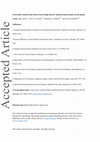
Conservation biology : the journal of the Society for Conservation Biology, Jan 24, 2018
Increasing anthropogenic pressure on marine ecosystems from fishing, pollution, climate change an... more Increasing anthropogenic pressure on marine ecosystems from fishing, pollution, climate change and other sources is a big concern in marine conservation. Scientists have thus developed spatial models to map cumulative human impacts on marine ecosystems. However, these models make many assumptions and incorporate data that suffer from substantial incompleteness and inaccuracies. Here, as opposed to using a single model, we used Monte Carlo simulations to identify which parts of the oceans are most and least impacted by anthropogenic stressors under seven simulated sources of uncertainty (factors), including errors in the input data and choices between alternative model assumptions. Most maps generated in the simulations agreed that high-impact areas were located in the Northeast Atlantic, the eastern Mediterranean, the Caribbean, the continental shelf off northern West Africa, offshore parts of the tropical Atlantic, the Indian Ocean east of Madagascar, parts of East and Southeast As...







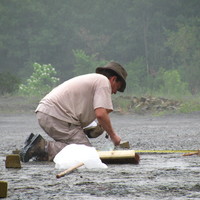


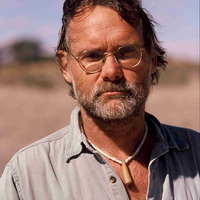
Uploads
Papers by Fiorenza Micheli
We use the distinction between compositional and aggregate variability to develop an organizational framework for describing patterns of community variability. At their extremes, compositional and aggregate variability combine in four different ways: (I) stasis, low compositional and low aggregate variability; (2) synchrony, low compositional and high aggregate variability; (3) asynchrony, high compositional and high aggregate variability; and (4) compensation, high compositional and low aggregate variability. Each of these patterns has been observed in natural communities, and can be linked to a suite of abiotic and biotic mechanisms. We give examples of the potential relevance of variability patterns to applied ecology, and describe the methodological developments needed to make meaningful comparisons of aggregate and compositional variability across communities. Finally, we provide two numerical examples of how our approach can be applied to natural communities.